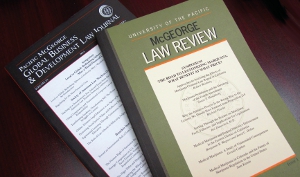Document Type
Article
Publication Date
2009
Abstract
This Article reconceptualizes the doctrine of the responsibility to protect (R2P). R2P provides that when a government fails to protect its citizens from genocide, war crimes, ethnic cleansing or crimes against humanity (“mass atrocities”), that responsibility shifts to the international community acting through the United Nations.
The U.N.'s apparent failure to include natural disasters in the catalogue of harms potentially justifying R2P intervention generated considerable controversy following Myanmar's refusal of foreign aid following the devastation wrought by Cyclone Nargis. Those seeking to limit the scope of R2P considered it inapplicable in the case of Myanmar, reading the U.N.'s focus on mass atrocities as a conscious decision to exclude natural disasters as triggers for R2P. By contrast, supporters of R2P looking to rely on the doctrine to compel Myanmar to accept aid have argued that there is no meaningful distinction between the failure to protect following natural disasters and the failure to protect from mass atrocities.
This Article shows that the causes of the harm are irrelevant. Developing what it labels a “constructive interpretation” of R2P, the Article demonstrates that R2P applies equally to a state's failure to protect its population from harm caused by its omission to act when that omission constitutes a crime against humanity. This thesis is advanced through the novel application of fundamental criminal law principles to the regime of international human rights, and includes a discussion of the extent to which the concept of crimes against humanity can be deployed where the harm to a civilian population comes about by means of inaction rather than action.
Publication Title
Tul. L. Rev.
Volume
84
First Page
219
Recommended Citation
Jarrod Wong, Reconstructing the Responsibility To Protect in the Wake of Cyclones and Separatism, 84 Tul. L. Rev. 219 (2009).



